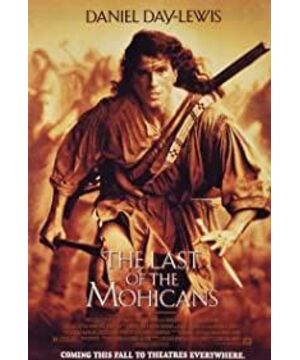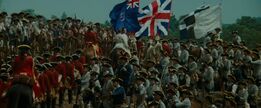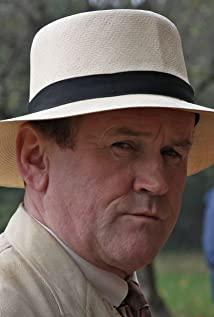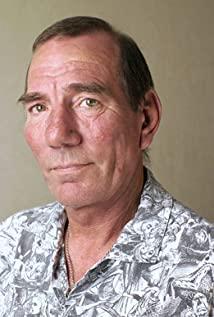also translated as Mohawk.
The Iroquois-speaking North American Indian tribe is the easternmost member of the Iroquois League, with three villages located west of what is now Schenectady, New York.
The Mohawks, like other Iroquois tribes, were semi-settled. Women farm and grow maize, while men hunt in autumn and winter and fish in summer. Several families who were related to each other lived in a long house, a symbol of Iroquois society. According to legend, the Mohok leader, Hiawatha, was the first to accept the principles of peace preached by the Prophet of Peace, Dekanawida, the founder of the Iroquois Confederacy.
The Mohawks have 9 representatives in the alliance, 3 each from the Turtle Clan, the Wolf Clan, and the Bear Clan. Each Mohok village community also has a local council to guide the work of the village chief. The Mohoks often fought with their neighboring Algonquin tribes. Since the Dutch traded firearms for beaver skins, the number of Mohok victories has increased. But after contact with Europeans, its population also declined sharply. In the late 20th century, the Mohok totaled about 5,000 people.
The Moheke people are the direct descendants of the Xuanyuan clan. This is based on the fact that the Moheke tribe has preserved the Xuanyuan clan emblem. In the "Xuanyuan Yellow Emperor Ritual and Praying for the New Year", the man in North China has a tortoise shell on his abdomen, and the god representing the sky is a large tortoise (Tianyuan) surrounded by 28 stars - apparently the twenty-eight constellations. This is a vivid record of totem worship.
Two Oneida Oneida
also translated Oneida .
The Iroquois-speaking North American Indian tribe, located in what is now central New York, is one of the original five ethnic groups of the Iroquois League. They live semi-settled lives, grow corn, and live in long houses. Each family is related to each other according to the matrilineal line, and is divided into 3 clans, each with 3 representatives participating in the alliance. Each community also has a local meeting to guide the work of the chief.
The Oneida were the least populous tribe in the Union. In the 17th century, there was only one gated town with 60 to 100 long houses. The town was destroyed by a French-Canadian expedition in 1696. The community has since been divided into the Oneida settlement (Upper Castle) and the Canawaroghere settlement. In the early 18th century, a village of the Tuscarora people in North Carolina united with the Oneida people to become the sixth nation in the Iroquois Confederacy. In the late 20th century, there were about 3,000 descendants of Oneida, mainly in Canada and Wisconsin, central New York and other places in the United States.
Three Onondaga Onondaga
Iroquois-speaking North American Indians living in present-day New York State. Villages consist of long houses made of wood and bark. Move according to the season, or move to the side of the new vegetable garden, or to the place where fuelwood is collected, or to the fishing and hunting areas. Growing maize, beans, squash, sunflowers and tobacco. The village heads are guided by the men's meeting in each village. There were about 1,700 in the 17th century. The Onondaga Tribe was originally one of the five Iroquois nations, and was also the political and geographic center of the alliance (see the Iroquois League article). There are 14 representatives in the Union Parliament, including 1 each of the Union Chairman and the Archives Manager, who is responsible for keeping various transaction records. There were about 1,000 people on the New York State reservation in the late 20th century.
Four Cayuga natives of
Iroquois-speaking North American Indians, members of the Iroquois Confederacy, native to the area near Cayuga Lake, which is now central New York. Cayuga men hunt the region's abundant game, waterfowl, and fish, and women grow maize. A village is made up of multiple long-lived houses, each of which is inhabited by a number of related families. The French Jesuit Rene Menard first met the Cayuga in 1656, when their town was located in the eastern region of the lake, north of the marshes south of the Seneca River, about There are 1,500 people living in about 100 long houses. The regional council is composed of representatives of the 8 exogamous clans to guide the village chiefs. Each clan is further divided into two half-even clans, which are generally responsible for funeral and hunting ceremonies.
The entire history of the Cayuga people is the history of a mixed people. When they set up temporary settlements north of Lake Ontario, they had taken Huron and Erie captives in to supplement their war losses. In the late 17th century, they also absorbed many Siouan and Algonkian-speaking clans from the nearby southern and western regions. In the late 20th century, there were about 1,500 descendants of the Cayuga on the Six Nations reservation, continuing the tribe's language and manners. About 200 other Cayugas live among the Seneca Nation in western New York state, and 100 live in Oklahoma.
Half-even means dividing a society into two halves according to blood, and each half is called a half-even. That is, when the whole society is divided into two monophyletic successor groups, we call each group a semi-even group. Members of the half-even tribe believe that they share a common ancestor, but cannot prove the existence of this ancestor by a clear relationship, that is, cannot specify how to trace it back.
Five Senesas
Six Tuscaroras A group of
American Indians who once lived in North Carolina, and today live in western New York and southeastern Ontario, Canada. The Tuscaroras moved north in the 18th century, joining the Iroquois Confederacy in 1722 and embracing many aspects of Iroquois culture
View more about The Last of the Mohicans reviews











